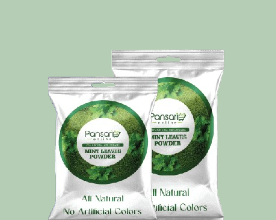Master/Teacher Plants vs. Dragon’s Blood: What You Need to Know About These Mystical Allies?
Exploring the world of plants with mystical or spiritual significance can be both fascinating and enlightening. Two intriguing entities in this domain are Master/Teacher plants and Dragon’s Blood. While they serve different purposes and come from distinct traditions, understanding their unique roles can deepen one’s appreciation of their uses and benefits.
Understanding Master/Teacher Plants
Master/Teacher plants are often revered in various spiritual and cultural practices for their profound ability to guide individuals on a journey of self-discovery and healing. These plants are not merely consumed for their physical properties but are deeply integrated into spiritual rituals and practices. They are known for their potential to teach valuable life lessons, offer deep insights, and assist in personal growth.
One key aspect of Master/Teacher plants is their role in spiritual ceremonies and practices. They are typically used under the guidance of experienced practitioners or shamans who understand their powerful effects. These plants are believed to facilitate communication with a person’s consciousness, allowing users to access deeper layers of the psyche and explore spiritual realms.
What is a Master/Teacher Plant?
To fully grasp the concept of Master/Teacher plants, it is essential to understand their role in spiritual and shamanic traditions. These plants are believed to possess a unique consciousness or spirit that can profoundly interact with humans. They are often used in ceremonies to facilitate healing, self-discovery, and spiritual awakening.
Master/Teacher plants are typically consumed in a controlled setting, during a retreat and following a “dieta” (diet), often under the guidance of a knowledgeable shaman or practitioner. The experiences they induce can vary widely, but they are generally intended to provide insights into one’s inner self and the nature of existence. These plants are more than just tools for achieving altered states; they are considered to be teachers and guides that offer valuable lessons and perspectives.
The Role of Dragon’s Blood
Contrasting with Master/Teacher plants, Dragon’s Blood is derived from the Croton lechleri tree, native to the Amazon forest. This botanical is renowned for its unique properties and applications, particularly in traditional medicine and spiritual practices. Unlike Master/Teacher plants, Dragon’s Blood is primarily valued for its physical and energetic properties rather than its ability to guide spiritual journeys.
Dragon’s Blood is often used in various forms, including incense, tinctures, and powders. The tree produces a sap that has been utilized for centuries by indigenous cultures of the Amazon rainforest for its purported healing and protective qualities. The sap is known for its deep red color and rich, earthy aroma, which contributes to its significance in rituals and ceremonies.
Exploring Dragon’s Blood
Dragon’s Blood being a botanical is primarily known for its physical and spiritual applications rather than its role as a Master/Teacher plant. Extracted from the Croton lechleri tree, it has been used in various traditional practices for its purported healing properties. It is often employed in rituals to enhance protection, purification, and healing.
The use of Dragon’s Blood can be traced back to ancient times, with numerous cultures incorporating it into their spiritual and medicinal practices. The sap is valued for its ability to cleanse spaces, protect individuals from negative energies, and support healing processes. While it does not serve as a guide or teacher in the way Master/Teacher plants do, it remains a significant element in spiritual and traditional practices.
Dragon’s Blood is used by indigenous peoples of the Amazon rainforest to treat many skin conditions, rashes, cuts, mosquito bites, etc. It is also diluted with water to treat mouth issues, like cold sores, tooth pain, mouth wash, and gargled to alleviate throat pain. At the same time, when diluted in water, it helps with many stomach issues, like diarrhea, ulcers, acid reflux, etc.
The Differences Between Master/Teacher Plants and Dragon’s Blood
Understanding the distinctions between Master/Teacher plants and Dragon’s Blood being a botanical is crucial for those exploring their uses. Master/Teacher plants are characterized by their role in guiding spiritual journeys and facilitating personal growth. They are consumed in a ceremonial context and are valued for their potential to provide deep insights and transformative experiences.
Dragon’s Blood being a botanical, in contrast, is more focused on its physical properties and applications. It is used for its protective and healing attributes rather than for spiritual guidance. The resin from the Croton lechleri tree is appreciated for its traditional uses in rituals and ceremonies but does not carry the same role as Master/Teacher plants in spiritual practices.
Incorporating Master/Teacher Plants and Dragon’s Blood into Practices
When considering the use of Master/Teacher plants or Dragon’s Blood, it is essential to approach them with respect and understanding. Master/Teacher plants require careful preparation and a mindful approach, often involving guidance from experienced shamans or practitioners. Their use is deeply rooted in spiritual traditions and should be approached with reverence and preparation.
Dragon’s Blood, being a botanical, can be incorporated into various practices, specially to alleviate skin and stomach issues. It is often used in combination with other herbs and resins to enhance its effects. While it may not offer the same spiritual guidance as Master/Teacher plants, its traditional uses make it a valuable component in spiritual and healing practices.
Key Takeaways
- Master/Teacher Plants: Known for their role in spiritual guidance and personal growth. They offer insights and transformative experiences through ceremonial use.
- Dragon’s Blood is a botanical: Derived from the Croton lechleri tree, valued for its protective and healing properties rather than spiritual guidance.
Both Master/Teacher plants and Dragon’s Blood hold significant places in spiritual and traditional practices. Understanding their unique roles and applications can enhance your appreciation of these mystical allies. Whether you are drawn to the guiding wisdom of Master/Teacher plants or the physical benefits of Dragon’s Blood being a botanical, approaching them with knowledge and respect can enrich your spiritual journey.



